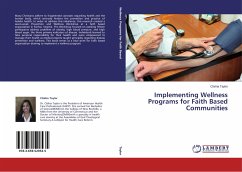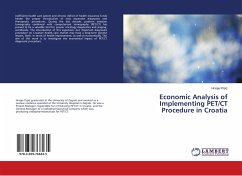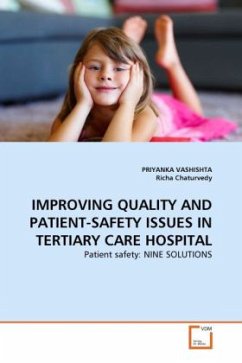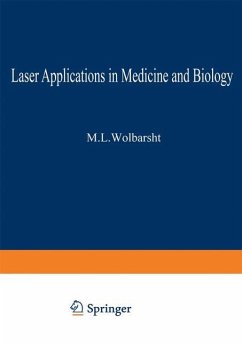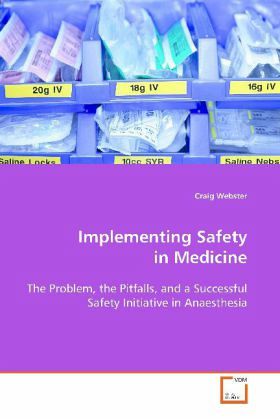
Implementing Safety in Medicine
The Problem, the Pitfalls, and a Successful Safety Initiative in Anaesthesia
Versandkostenfrei!
Versandfertig in 6-10 Tagen
45,99 €
inkl. MwSt.

PAYBACK Punkte
23 °P sammeln!
The rate of injury and death inadvertently caused bymedical treatment is too high and exacts enormoushuman and financial costs. Each year in Britain andthe United States alone, hundreds of thousands ofpatients are injured, ten of thousands are killed andbillions of dollars are spent on additional healthcare due to treatment-related harm. This bookdocuments one of the first successful attempts toredesign error-prone medical systems, specificallydrug administration in anaesthesia, according to themodern safety principles advocated by the Instituteof Medicine and others in the human factors field...
The rate of injury and death inadvertently caused by
medical treatment is too high and exacts enormous
human and financial costs. Each year in Britain and
the United States alone, hundreds of thousands of
patients are injured, ten of thousands are killed and
billions of dollars are spent on additional health
care due to treatment-related harm. This book
documents one of the first successful attempts to
redesign error-prone medical systems, specifically
drug administration in anaesthesia, according to the
modern safety principles advocated by the Institute
of Medicine and others in the human factors field.
Safer systems will initially cost a little more -
leading many hospital managers to conclude that they
cannot afford to make their hospitals safer. However,
harming patients during their treatment, and then
having to treat them for such harm, is
extraordinarily inefficient and expensive. The scope
for savings by avoiding patient harm is therefore
large, to say nothing of the reduction in human
suffering. This book does not require the reader to
be a specialist and will be of interest to anyone
involved in system change or safety improvement in
medicine.
medical treatment is too high and exacts enormous
human and financial costs. Each year in Britain and
the United States alone, hundreds of thousands of
patients are injured, ten of thousands are killed and
billions of dollars are spent on additional health
care due to treatment-related harm. This book
documents one of the first successful attempts to
redesign error-prone medical systems, specifically
drug administration in anaesthesia, according to the
modern safety principles advocated by the Institute
of Medicine and others in the human factors field.
Safer systems will initially cost a little more -
leading many hospital managers to conclude that they
cannot afford to make their hospitals safer. However,
harming patients during their treatment, and then
having to treat them for such harm, is
extraordinarily inefficient and expensive. The scope
for savings by avoiding patient harm is therefore
large, to say nothing of the reduction in human
suffering. This book does not require the reader to
be a specialist and will be of interest to anyone
involved in system change or safety improvement in
medicine.



